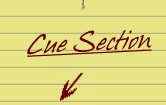Well, I finally did it, so here it is. A tutorial in a way, but also a insight
into the way I went about making the Meucci MEP04. This part shows how to make
the upper part of your cueskin, and the most complicated and important bit.
Before we begin, for those of you not familiar with mapping textures onto objects,
click here for a very brief diagram,
explaining things.
Step 1: Reference Image
To start the ball rolling you'll need an image of the cue you are designing,
unless, of course, you are making a completely original cue. The image should
be pretty large, approx the same scale or greater than what you require. IE.
you should be scaling down or not at all. Scaling up will pixelate your image,
giving undesirable results.
Most online cue stores have large images, and many are exactly the right size.
I got this one from
www.billiardwarehouse.com.
View this step
Step 2: Copy and paste
Next is to get your pic over onto your canvas. Make an image of size 256x768,
and set the canvas to a colour the conflicts with your cue colour (I have chosen
black here). Copy the upper-half of your cue (the pattern you are going to work
on) and paste it onto the new 256x768 canvas. Scaling this copy down if needed
should be done now. Note - this must be copied and pasted onto a new layer.
View this step
Step 3: Eraser boredom
Now comes the bit we all hate. You have to take the eraser tool, and just rub
out all the way around the pattern. This is where the significance of using
a conflicting colour for the background - you can see the parts left to erase
far easier.
View this step
Step 4: Seeing double, double!
Ok, now you have to duplicate the pattern however many times it repeats itself
on the cue. This will most likely be four, as in our case. Just simply copy
and paste the pattern 3 times, and try your best to keep them aligned (in photoshop
hold down the shift key to keep the movement on the same axis).
View this step
Step 5: Other details
This step can cover a broad range of items, so I'll stick to showing it for
the Meucci. I needed a few star shaped objects to be created, ready for the
next copy and paste operation. I noticed that these were too close to the "curvature"
of the cue (they were no good, check the reference pic!). Instead, I took a
corner from the top of the other pattern, copied, rotated it, and moved it.
This can always be done when the object has a rotational symmetry of 4. The
pic below shows this better than I could ever explain
View this step
Step 6: More repeating
Patterns repeat all over most cues, so you'll only need to do these things once,
then copy and paste. Anyways, next is to copy and paste the detail done above
into position all over the skin.
View this step
Step 7: Set the background
Next, change layers back down to the background. Now simply change the colour
to the cue colour. Do not add detail yet, just use a block of sloid colour to
fill it in.
View this step
Step 8: New layer
Create a layer just above the background layer. Place a
wood
texture there. I got this one from a free texture site somwehere, just make
sure its a seamless texture to avoid a "wallpaper effect".
View this step
Step 9: Finally!
Take the wood layer and set it to soft light. You could also experiment with
the transparency level of the layer too/instead. Finally move the patterns into
final position and add any last details. In my cue I added a final thick, black
line at the bottom to seperate the wrap from the cue a little more.
View this step
Step 10: Finally Finally Final step!
Ok, now you have a 256x768 file. BUT you need 256x256 files, and guess what,
you need three of em. Well, our pic should divide up nicely to 3 256x256 images,
so set your grid to a 256 spacing, and snap to grid should be on. Then, using
the crop tool, simply copy and paste the three sections into three new files,
each sized 256x256. If your grid was right, they fit perfectly. Then, you have
to save as a BMP file, windows format. The files should be named cuenameA.bmp,
cuenameB.bmp and cuenameC.bmp, where cuename is the name of your cue! (duh!).
Finally, you may ask why we did a 256x768 then split it up. Well if you haven't
worked it out yet, its the only way to get a seamless texture - that is, you
cannot tell where one 256x256 image ends and another starts. This is important
if your cue is to look "da_shit" (or even partially good..)
Next - Making the butt





